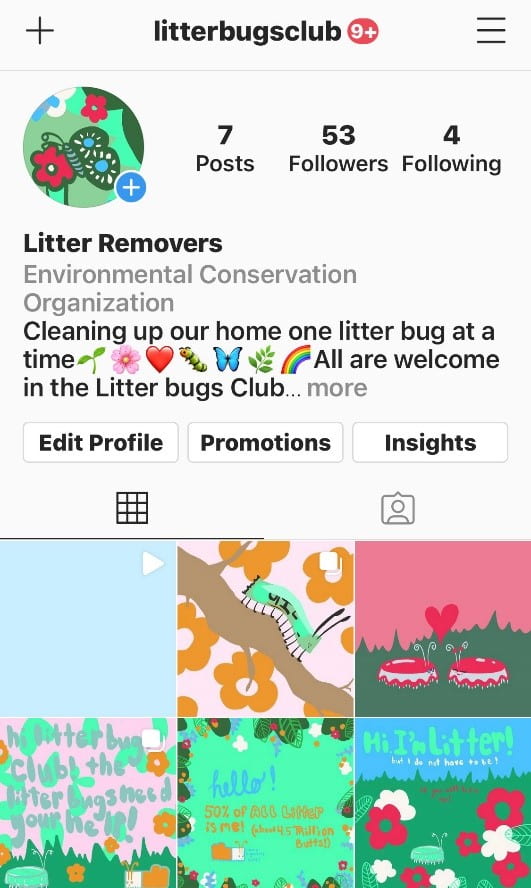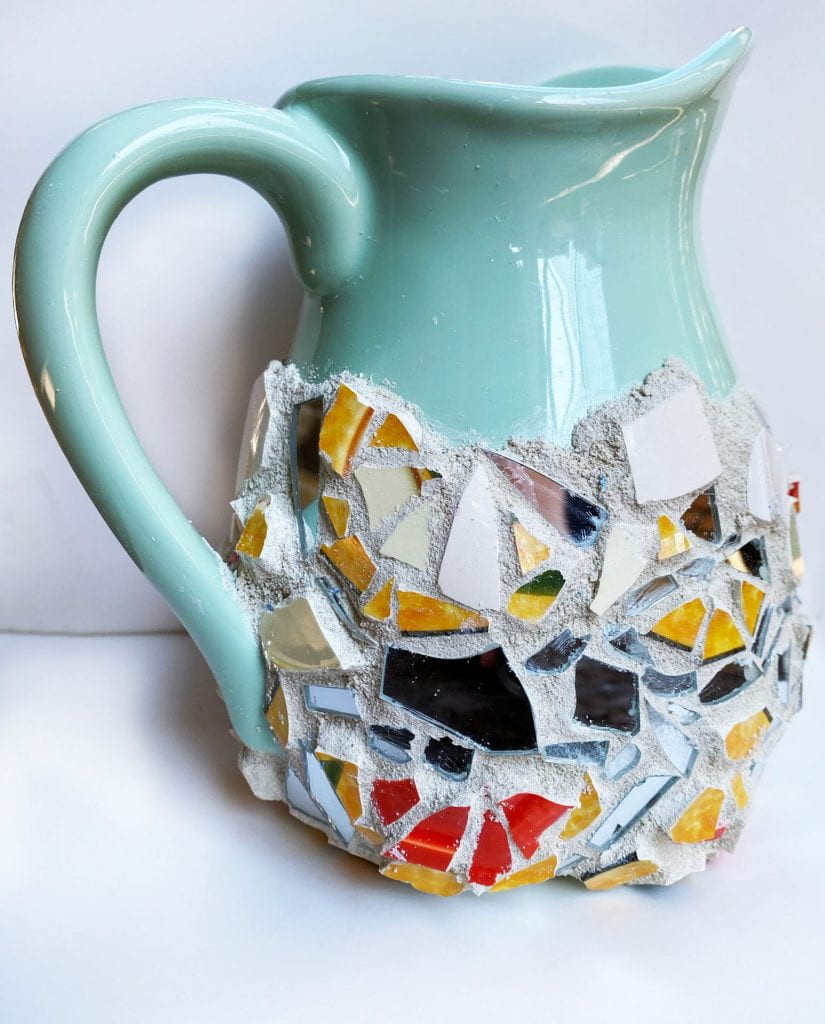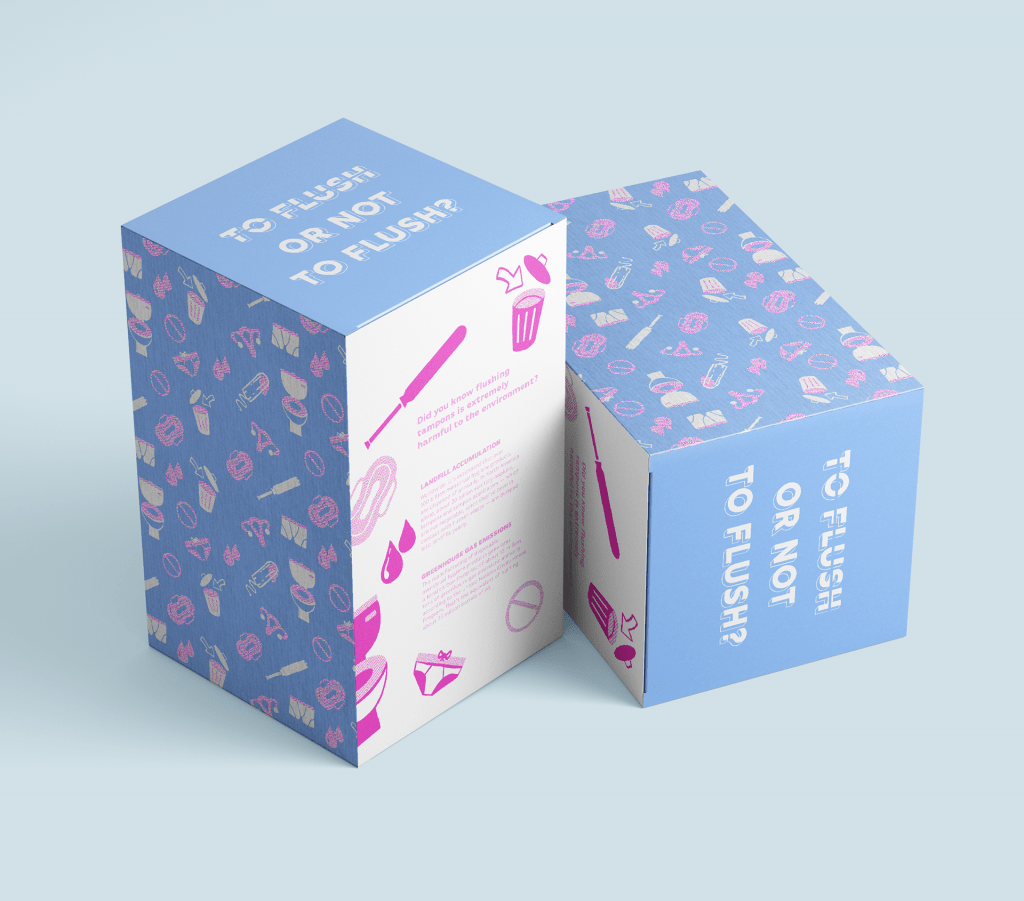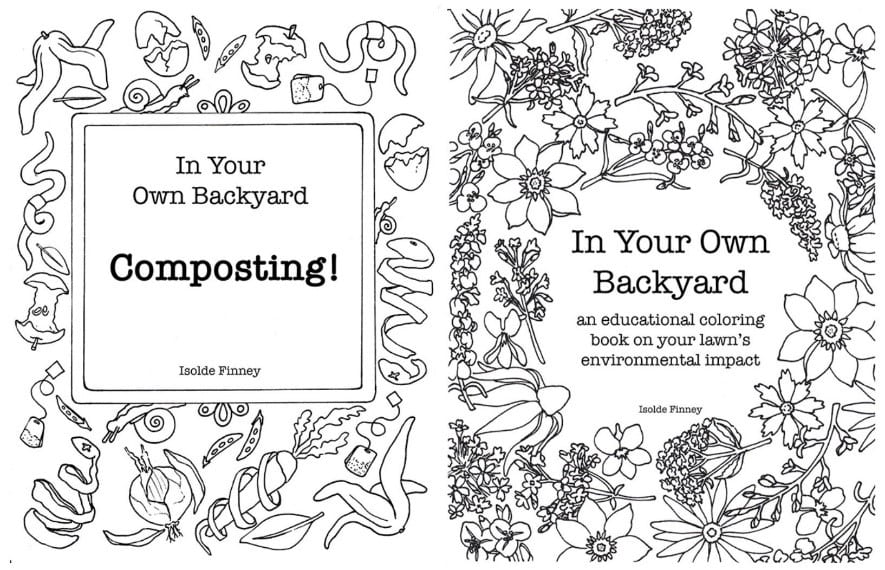[Photo Credit: Sophie Ross, “Dumpster Dive”]
Jarea Fang, Communication Associate at the Office of Sustainability, is one of the eleven BFA students who participated in Eco-Art Fall 2020 in the Sam Fox School. She shares about the concept of eco-art, what she learned in the class, and most importantly, the online exhibition that came out of it.
Eco art, or eco-driven art, is a simple name for a complex range of art practices and working methodologies that explore the intersection between art, ecology, and ethics. It is a loose terminology that has evolved and diversified significantly since the dawn of the modern environmental movement. More and more, eco-artists are seeing themselves as activists, using their art to engage and raise awareness of the environmental issues that they care about.
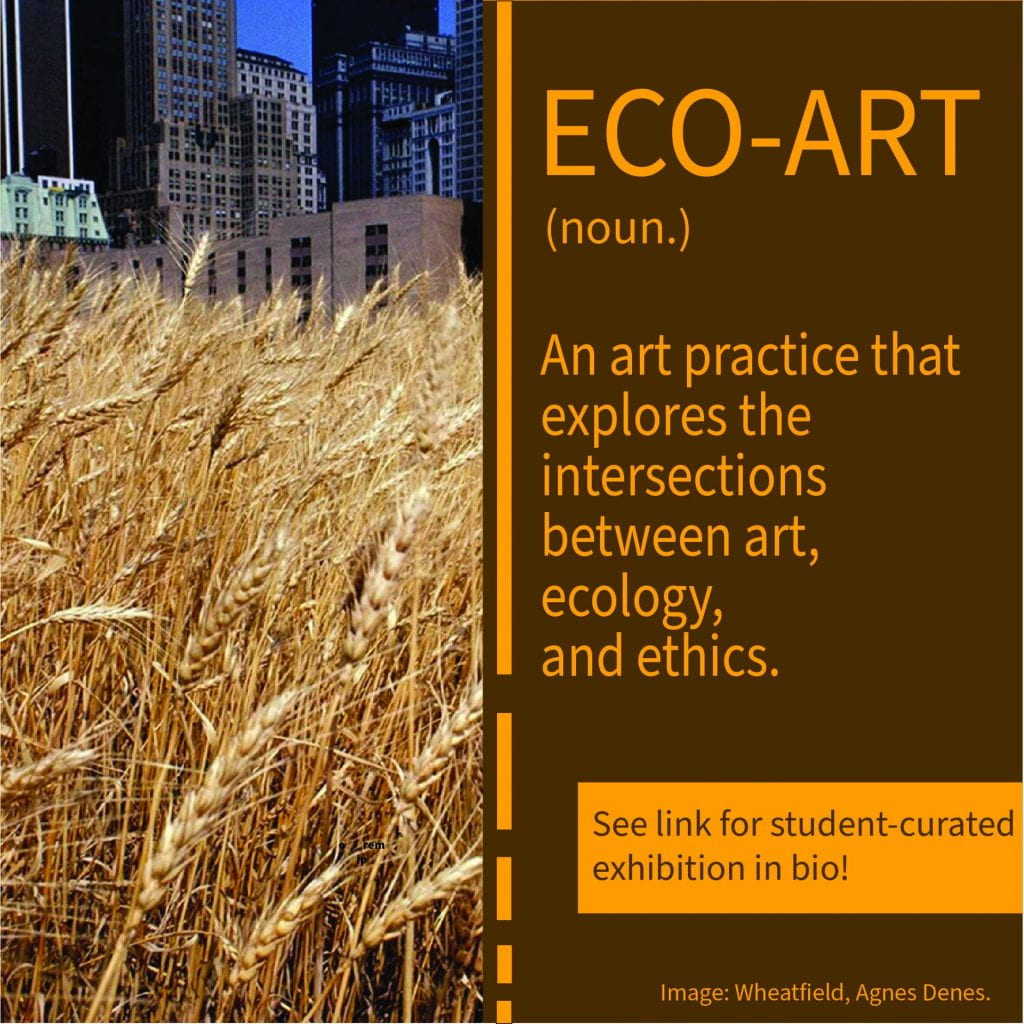
Thus, for the first time since the course debuted in 2016, the Sam Fox School offered the elective “Eco-Art” during the Fall 2020 semester. Eleven students answered the call, all of whom are passionate about environmental justice in various, yet similar, ways.
“For the students, it’s an exciting way to think about integrating two deeply held commitments: their art and design practice, and their commitment to environmental change,” says Professor Cheryl Wassenaar, the mastermind behind the class. “We had a range of students from freshman to graduate level; some had minors in Environmental Studies, and others were taking related coursework. In some ways, we all shared something in common, but that focus actually allowed for much diversity in the way that work was approached.”
The class was split into four different modules: What a Waste; Re-Valued Object; In the Land, With the Land; and Activism + Engagement. In each module, we learned about a different subcategory of eco-art, as well as its history and its founding artists. The goal was that by the end of the class, we would have enough skill and knowledge to become more sophisticated eco-artists ourselves.
The online exhibition, which is the culmination of the work created by students in this class, is likewise split into sections, along with a fifth one titled “Final Project.” It is in this last unit that the students got to show off the best of their crafts, having been given the opportunity to develop their own directions in eco-art.
In today’s age of social media activism and self-expression, it is especially important for eco-artists and climate activists alike to find their own creative, expressive way to advocate for our earth. As a Marketing and Communications Associate for the Office of Sustainability, I am familiar with the role that social media and influencers can play: the power of an aesthetic and educational visual image that reaches far and reaches fast. Learning how to be a more innovative and informed eco-artist means being a more effective activist, a much better artist, and a more responsible citizen of this earth.
The fourth module, aptly named “Activism + Engagement”, contains community intervention projects from eco-artists in the class. This was the unit that resonated with me the most:
Through Becky Moon’s short animation, I learned that deleting and unsubscribing from spam emails is one easy way to decrease my carbon footprint in the digital age. Isolde Finney’s art taught me about lawn care and home composting through downloadable coloring books. And, by participating in Talie Johnson’s Litter Bugs Club, I grew more aware of the impact of litter on our community while also following the adventures of bottle-cap bugs and candy-wrapper caterpillars.
By the end of the semester, as students we had two takeaways. Firstly, we want to help each other put these projects into the world, and secondly, we are ready to embrace our power as eco-artists: to make climate activism accessible to everyone, everywhere.
“We formed a supportive classroom community that was truly invested in each other’s learning, eager to share ideas and resources, from sites of sustainable businesses to posting each other’s environmental work on social media,” says Professor Wassenaar. “By the final project, they found their own methods for a more sustainable practice that I feel confident will last beyond the semester’s end.”
The online exhibition for Eco-Art Fall 2020 opened in January, and will remain open until the end of the Spring 2021 semester. By visiting the online exhibition, you can delve into the eco-art practices and traditions that paved the way for our art work and advocacy practices today.


